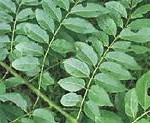Poultry raisers both producers of eggs and meat, can cut costs by using powdered kakawate (madre cacao) leaves as ingredient in their feeds.
A study conducted by Judito Latap of the Ifugao State College of Agriculture and Forestry showed that kakawate leaf meal is indeed a good poultry feed ingredient. It could take the place of ipil-ipil leaf meal that is often used by feed millers.
In his study, Latap prepared six different rations. One ration which did not have any kakawate served as the control of reference. The remaining five rations contained kakawate leaf meal in varying amounts as low as 2 percent and as high as 10 percent of the ration.
The other ingredients included ground white corn, soybean oil meal, rice bran, fish meal, copra meal, meat and bone meal, limestone, salt and vitamin-mineral premix.
Layers fed with rations containing kakawate produced more eggs per day than those fed without it. The kakawate fed chickens produced heavier eggs where there were more eggs that were classified as medium and large sizes.
Layers fed with 6 to 8 percent kakawate leaf meal produced eggs with a high Haugh Unit value of 86.47 to 86.48. The egg shells were also thicker than those not given kakawate. Those fed with kakawate leaf meal also produced yolks with more intense yellow color.
Latap also observed that layers fed with kakawate diets required less feed to produce a dozen standard size eggs, only 1.6 to 1.9 kilos.
In broilers, Latap mixed 4 to 10 percent leaf meal in the rations. All levels of kakawate gave a heavier final body weight , faster growth rate and better feed efficiency.
Kakawate leaf meal is quite easy to prepare. Leafy twigs are gathered and sun dried for one day. The sun dried leaves are then passed through a grinder or a hammer mill to convert them into powder form.
What is good about kakawate is that it produces a lot of leaves. It is drought resistant, and readily grows back its leaves after the branches are cut. It can be propagated by seed or by branch cuttings.

May I ask , if it is ok to feed the fresh kakawa leaves to the animals.